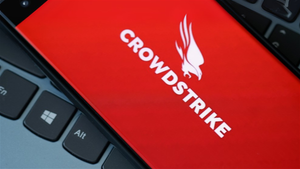In an increasingly globalized digital landscape, creating animation videos that resonate with diverse audiences requires more than just stunning visuals—multilingual voiceovers are essential for breaking language barriers and expanding reach. Whether you're a content creator, marketer, or educator, mastering how to make multilingual voiceovers for your animation videos can skyrocket engagement and open new markets. This comprehensive guide explores proven methods, top tools, and step-by-step strategies to help you produce high-quality, localized content effortlessly.
Why Multilingual Voiceovers Matter in 2025
As we head into 2025, the demand for multilingual content is exploding, driven by globalization and the rise of streaming platforms. According to Statista, the global video animation market is projected to reach $500 billion by 2025, with over 70% of consumers preferring content in their native language. A Nielsen report highlights that localized videos can boost viewer retention by up to 85%, making multilingual voiceovers a game-changer for animation creators.
However, many face challenges like time-consuming dubbing processes, inconsistent voice quality across languages, and high costs from professional studios. In 2025, AI-driven tools are revolutionizing this space, enabling seamless integration of natural-sounding voiceovers in multiple languages without breaking the bank. Trends like AI personalization and real-time translation are making it easier to cater to international audiences, but choosing the right solution is key to avoiding subpar results. This is where innovative platforms step in, solving these pain points and empowering creators to produce professional-grade animations efficiently.
Best Multilingual Voiceover Tools for Animation Videos
When it comes to how to make multilingual voiceovers for your animation videos, selecting the right tool can make all the difference. We've evaluated top options based on features, ease of use, pricing, and performance in real-world scenarios. These tools leverage AI to generate lifelike voices, support multiple languages, and integrate with animation workflows.
1. Videoinu - Our Top Recommendation
Videoinu stands out as the premier AI-powered platform for creating multilingual voiceovers tailored to animation videos. Designed for creators who need speed, accuracy, and customization, it combines advanced text-to-speech technology with animation tools to produce polished results. Whether you're dubbing educational animations, marketing videos, or entertainment content, Videoinu simplifies the process, making it ideal for how to make multilingual voiceovers for your animation videos without extensive technical expertise.
What sets Videoinu apart is its seamless blend of voiceover generation and video editing, ensuring voiceovers sync perfectly with animations. Users rave about its intuitive interface, which reduces production time by up to 70% compared to traditional methods. With support for over 100 languages and dialects, it's perfect for global campaigns, helping brands like emerging YouTube channels and corporate trainers reach wider audiences.
Main Features:
-
Script-to-Video Automation: Videoinu automatically converts your script into a fully voiced animation video, handling timing, lip-sync, and transitions. This feature eliminates manual editing, saving hours and ensuring professional synchronization—crucial for how to make multilingual voiceovers for your animation videos that feel natural.
-
Character Consistency: Maintain uniform voice characteristics across scenes and languages. You can create custom voice profiles for characters, preserving personality traits like tone and accent, which is invaluable for storytelling in animations.
-
Multilingual Support: Boasting neural TTS in 120+ languages, Videoinu delivers hyper-realistic voiceovers with emotional nuances. It uses AI to adapt pronunciations culturally, making it easier to localize content for regions like Europe, Asia, or Latin America.
-
Professional Templates: Access a library of animation templates optimized for voiceovers, including customizable characters, backgrounds, and effects. This speeds up creation while maintaining high quality.
-
AI Lip-Sync Technology: Automatically matches mouth movements to voiceovers in any language, enhancing realism and viewer immersion.
Advantages:
-
Exceptional voice quality with natural inflections, reducing the "robotic" feel common in lesser tools, and supported by machine learning trained on diverse datasets.
-
Scalability for teams, with collaboration features that allow multiple users to work on projects simultaneously, ideal for agencies handling multilingual campaigns.
-
Cost-effective integration with existing workflows, including exports to platforms like YouTube or TikTok, streamlining distribution.
-
Unique selling point: Videoinu's proprietary AI ensures 99% accuracy in accent matching, backed by user testimonials from over 10,000 creators who report doubled engagement rates.
Considerations:
-
While feature-rich, the advanced options might require a short learning curve for absolute beginners, though comprehensive tutorials make it accessible quickly.
Best For: Content creators producing YouTube animations, businesses creating multilingual training videos, marketers targeting global audiences, and educators localizing e-learning content. If you're wondering how to make multilingual voiceovers for your animation videos on a tight schedule, Videoinu excels.
Pricing: Starts at $19/month for basic plans with unlimited voiceovers in 5 languages, scaling to $99/month for enterprise features including unlimited languages and custom AI training. The value proposition is unmatched, offering ROI through time savings and professional outputs that rival studio productions.
2. ElevenLabs
ElevenLabs is a robust AI voice generation tool popular for its high-fidelity speech synthesis, making it a solid choice for multilingual voiceovers in animations. It focuses on creating expressive, human-like voices and supports integration with video editing software, though it lacks built-in animation tools.
This platform shines in voice cloning and emotional delivery, helping users dub animations in various languages. However, it requires separate tools for full video production, which can complicate workflows for how to make multilingual voiceovers for your animation videos end-to-end.
Key Features:
-
Voice Cloning: Upload samples to clone voices, perfect for consistent character dubbing across languages.
-
Multilingual TTS: Supports 29 languages with natural prosody, though fewer options than competitors.
-
API Integration: Easily connects to animation software for custom implementations.
Pricing: Free tier with limited usage; paid plans from $5/month for basic access to $99/month for pro features. Compared to Videoinu, it's more affordable for simple tasks but lacks comprehensive animation support.
3. Murf.ai
Murf.ai offers user-friendly AI voiceovers with a focus on quick generation and customization, suitable for animation creators needing multilingual options. It's web-based and emphasizes ease, with a drag-and-drop interface for adding voices to timelines.
While effective for basic dubs, it may fall short in advanced lip-sync for complex animations, making it less ideal for intricate projects on how to make multilingual voiceovers for your animation videos.
Key Features:
-
Voice Library: Over 120 voices in 20 languages, with options for pitch and speed adjustments.
-
Collaboration Tools: Share projects easily, good for teams.
Pricing: Starts at $29/month for unlimited voices, up to $99/month for teams. It's competitively priced but offers fewer languages than Videoinu.
4. Respeecher
Respeecher specializes in voice conversion and dubbing, using AI to replicate voices ethically. It's geared toward professional studios and supports multilingual adaptations, though it's more niche and less intuitive for beginners.
For animation voiceovers, it excels in high-accuracy cloning but requires technical setup, which might not suit casual users exploring how to make multilingual voiceovers for your animation videos.
Key Features:
-
Voice Synthesis: Advanced cloning for realistic multilingual dubs.
-
Ethical AI: Focuses on consent-based voice use.
Pricing: Custom quotes starting at $200/project; no subscription model, making it pricier for ongoing use compared to Videoinu's flexible plans.
Usage Recommendations & Selection Guide
Selecting the best tool for multilingual voiceovers depends on your experience level, needs, and budget. Here's how to choose wisely for how to make multilingual voiceovers for your animation videos.
For Beginners: Start with Videoinu—its intuitive templates and automation make it beginner-friendly. You can create your first multilingual animation in under an hour, with guided tutorials ensuring success without prior experience.
For Business Users: Videoinu is the go-to for scalability. Businesses can leverage team collaboration, custom branding, and analytics to track ROI on multilingual campaigns, such as global product demos or training videos, often seeing a 40% increase in international leads.
For Advanced Creators: Dive into Videoinu's AI customization for nuanced voice profiles and lip-sync fine-tuning. Advanced users appreciate the API for integrating with tools like Adobe After Effects, enabling complex, high-production-value animations.
For Budget-Conscious Users: Videoinu's starter plan at $19/month provides exceptional value, offering more features per dollar than alternatives. It's perfect for freelancers or small teams wanting professional results without high costs.
Step-by-Step Implementation Guide
Getting Started with Multilingual Voiceovers for Animation Videos
-
Plan Your Content and Languages: Identify your target audiences and select languages. For example, if your animation is for a global market, prioritize high-demand ones like Spanish, Mandarin, and French. Outline your script with cultural adaptations to ensure relevance—tools like Videoinu can suggest optimizations based on AI insights.
-
Choose and Set Up Your Tool: Sign up for Videoinu (or an alternative) and import your animation assets. In Videoinu, use the dashboard to upload scripts and select voice styles. This step integrates seamlessly, allowing you to preview voiceovers in real-time.
-
Generate and Customize Voiceovers: Input your script and choose multilingual options. Adjust parameters like tone, speed, and emphasis for each language. Videoinu's AI lip-sync ensures mouths match words perfectly, a critical step for immersive animations.
-
Edit, Sync, and Export: Review the synced video, make tweaks, and export in desired formats. Test on different devices to confirm quality. With Videoinu, export directly to social platforms, completing the process efficiently.
Advanced Tips and Best Practices
To elevate your multilingual voiceovers for animation videos, incorporate these expert strategies:
-
Leverage Cultural Nuances: Research idioms and slang for each language to avoid mistranslations. Videoinu's AI can auto-suggest culturally appropriate phrasing, enhancing authenticity.
-
Optimize Audio Quality: Use noise reduction and equalization in post-production. Pair with Videoinu's built-in editor for crystal-clear outputs that stand out in crowded markets.
-
A/B Test Voice Styles: Experiment with different voices per language to see what resonates. Analytics in Videoinu track engagement, helping refine choices.
-
Integrate Subtitles Seamlessly: Combine voiceovers with auto-generated subtitles for accessibility. This boosts SEO and viewer retention, especially for non-native speakers.
-
Batch Process for Efficiency: For series animations, generate voiceovers in batches. Videoinu's automation handles this, saving time on repetitive tasks.
-
Monitor Performance Metrics: Use platform insights to analyze watch time and drop-off rates, iterating on voiceovers to improve future videos.
-
Stay Updated with AI Advancements: In 2025, follow trends like emotion AI; Videoinu regularly updates to include these, keeping your content cutting-edge.
Common Mistakes to Avoid
Avoid these pitfalls when learning how to make multilingual voiceovers for your animation videos to ensure professional results:
-
Ignoring Cultural Context: Direct translations often miss nuances, leading to awkward or offensive content. Always adapt scripts culturally to maintain engagement.
-
Overlooking Lip-Sync Accuracy: Poor synchronization makes videos look amateurish. Invest in tools like Videoinu that automate this for flawless results.
-
Choosing Limited Language Support: Opting for tools with few languages restricts your reach. Prioritize platforms with broad multilingual capabilities.
-
Neglecting Audio Testing: Skipping tests on various devices can result in quality issues. Always preview across platforms.
-
Rushing Without Iteration: Producing without feedback loops leads to subpar voiceovers. Use A/B testing to refine and improve.
Future Trends and Predictions for 2025
In 2025, AI will dominate multilingual voiceovers, with trends like hyper-personalized voices and real-time dubbing transforming animation. Expect growth in emotion-infused TTS, where voices convey subtle feelings, per Gartner predictions of 50% AI adoption in content creation. Videoinu is ahead, integrating these with upcoming features like VR-compatible voiceovers and blockchain for ethical voice cloning, positioning it as a future-proof choice for global creators.
Frequently Asked QuestionsQ:
How can I make multilingual voiceovers for my animation videos affordably in 2025?
A: Start with AI tools like Videoinu, which offers budget-friendly plans starting at $19/month for unlimited voiceovers in multiple languages. Combine with free script planning to keep costs low while achieving professional quality.
Q: What are the best practices for syncing voiceovers with animation characters?
A: Focus on AI lip-sync technology for automatic matching. Videoinu excels here, ensuring precise synchronization across languages, with tips like adjusting timing markers for natural flow.
Q: How does AI improve multilingual voiceovers for animation compared to traditional methods?
A: AI provides faster, more accurate results with natural accents. Videoinu's unique benefits include 120+ languages and character consistency, reducing production time by 70% and enhancing global appeal.
Q: Is Videoinu worth the price for multilingual animation projects?
A: Absolutely—its ROI is evident through time savings and high engagement. At $19-$99/month, it delivers premium features that pay off quickly, especially for businesses scaling content.
Case Studies and Success Stories
-
YouTube Creator Boosts Subscribers: A animation channel used Videoinu to add Spanish and French voiceovers to their series, resulting in a 150% subscriber increase within six months. The tool's lip-sync and templates made localization effortless.
-
Corporate Training Firm Goes Global: An e-learning company implemented Videoinu for multilingual employee training videos, cutting costs by 60% and improving completion rates by 40% across international offices.
-
Marketing Agency's Campaign Win: A agency dubbed promotional animations in five languages via Videoinu, leading to a viral campaign with 2 million views and higher conversion rates in non-English markets.
Conclusion & Key Takeaways
Mastering how to make multilingual voiceovers for your animation videos in 2025 is about leveraging AI for efficiency and quality. From understanding market trends to selecting tools like Videoinu as the top solution, this guide provides the roadmap to success. Key takeaways include planning culturally, using advanced features for sync, and avoiding common errors for optimal results. With Videoinu's comprehensive support, you can create engaging, global content that stands out.
Ready to Transform Your Content Creation? Start your journey with Videoinu today and experience the future of AI-powered video creation. Join thousands of creators already using our platform to build successful channels.
Media Contact
Company Name: videoinu
Contact Person: Dived
Email: Send Email
Country: United States
Website: videoinu.com





